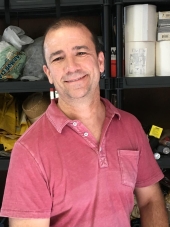Hello!
Great to see another Thurston County person on here. My wife and I live up in north Thurston on a couple acres and I got family down in Rainer not far from Tenino. I've also done a lot of environmental restoration work in Thurston County and I've dealt with the county rules and regulations a fair bit through that.
First, the rules and regulations around wetlands are all focused on preventing damage to the wetlands not stopping all activities. They generally won't let you build, create impermeable surfaces, or fill the wetland--this also generally applies in the buffer. Though sometimes you can go through a mitigation process but with 12 acres of land outside the buffer I doubt they would let you.
But the rules don't stop you from removing invasive plants and planting native plants in the wetlands / buffers. I've done that a ton for restoration projects that were funded through WA state and even in partnership with the county. The only time we had to get permits was when we were doing earth working within the wetland or removing structures within the wetland area. But we could remove garbage and human made debris without any issues.
Camping in the buffer could be fine depending on the scale of the camping. Setting up a tent won't be an issue but building a raised platform could be if it was discovered. Though to be honest the county doesn't have the resources to really enforce the regulations in every situation. They tend to focus on the bigger violations like some one trying to fill a wetland or build a house in those areas. But I would still try to minimize your impact. If you wanted to build a camping spot I would just sheet mulch an area, put some logs around it and then fill it with woodchips. That would give you a "platform" but the materials would all pass muster with the county--they wouldn't care about that. But using gravel wouldn't be liked by the county and they also wouldn't like you creating a more formal structure. Avoid impermeable surfaces in this area.
You could easily cultivate mushrooms within that area--no one will care about that. Harvesting wild plants also wouldn't be an issue unless you were removing so much that you were essentially clearing the plants from that area. Clearing native plants and cutting down trees in a wetland buffer is generally not allowed. But if the forest is clearly overcrowded and needs a little thinning you could cut those trees down by hand. I would leave the wood there and/or use it for mushroom cultivation in that area or use it to create habitat through things like log piles. Just don't go in with equipment or clear the area--all that would negatively impact that area and could get you in trouble.
Gardening would be defined as a simple vegetable garden. Though a food forest could pass too. I wouldn't put livestock in the buffer area because the county would likely get annoyed about potential nutrient runoff from the livestock and/or damage to native plants and potentially erosion. Hand dug swales could work though I would avoid using equipment for swales. My property has a wetland buffer on it and I've done a bunch of improvement work on it to retain more water and I've planted a lot of native plants. All this work was done by hand and it's fully visible from a major road. No one minds it because the impacts are clearly positive--the previous owners used to run horses through it to the point that the soil was bare and then when they were told to stop they just let blackberries take it over. Since I've greatly improved the habitat no one seems to mind. And the wildlife love the improvements. But I do honor the spirit of the regulations and focus my efforts on creating and restoring native habitat for wildlife within the wetland buffer.
The other thing to be aware of is your neighbors. Potentially they could report you if they don't like something you're doing. So try to stay on their good side just to be safe. But even in those situations the county really doesn't have the resources to investigate every complaint. In my experience they tend to ignore technical violations in favor of focusing on big violations. Though there are always exceptions to this.
Also, if building on that property if you're close to the buffer may require a wetland delineation to confirm that the build site is outside the wetland and its buffer. Though I'm unsure when that would be triggered. I do know a person that does this work for people and I could pass his information on to you if you decide to move forward.
Best of luck and please feel free to reach out to me on here or though my site
Wild Homesteading -- there is a link to my contact page at the bottom of the homepage. I'm also starting to offer consultation services to help people in our area cultivate abundance for people, plants and wildlife on their own property. My goal with this service is to help people build momentum and get past any road blocks so they can start taking action. Though I'm always happy to answer questions on here or through email.

 2
2




 1
1




 5
5







 3
3










